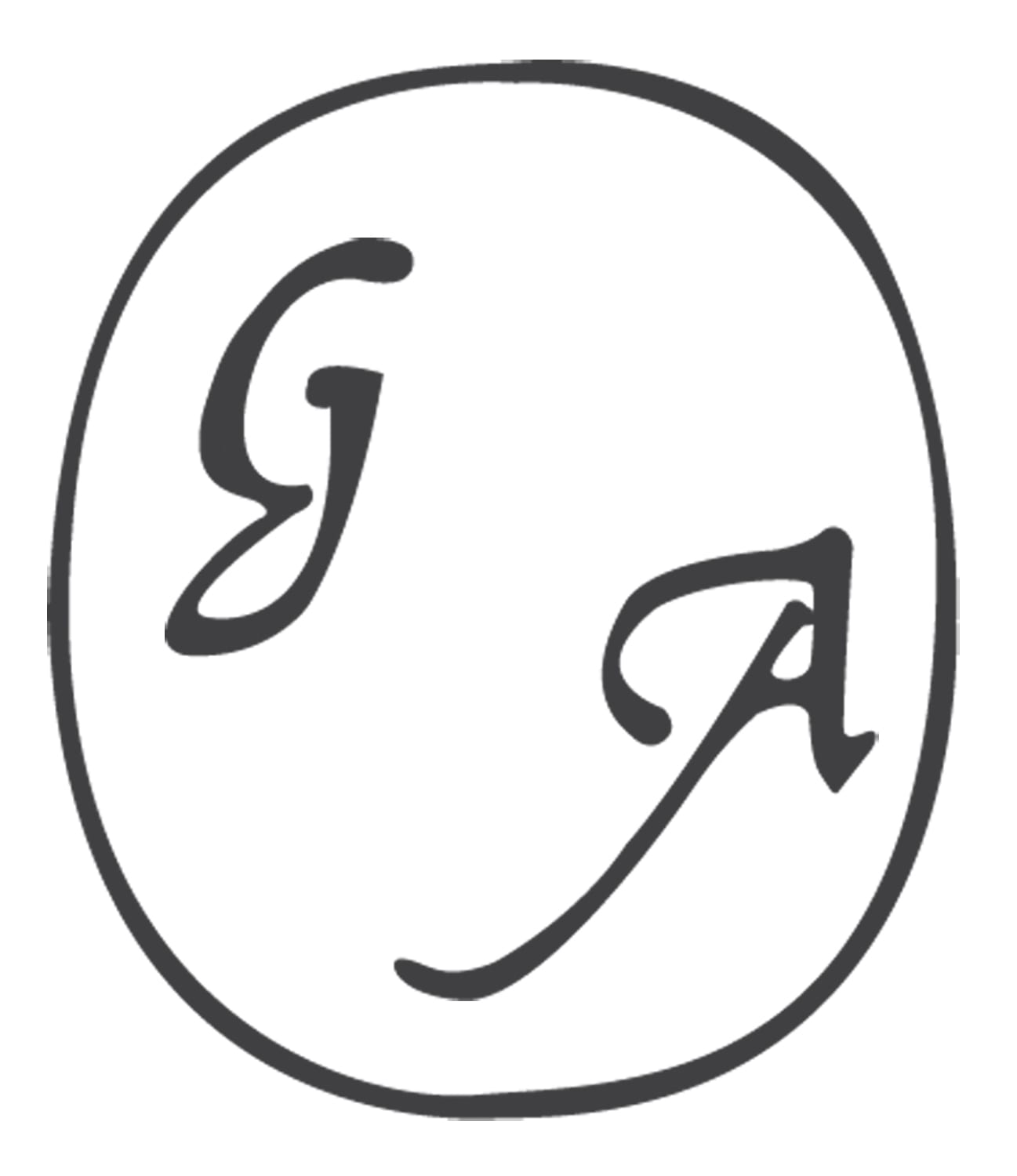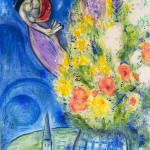



MARC CHAGALL (After) French, 1887-1985
The Poppies | Les Coquelicots, 1949
Hand Signed and Numbered Lithograph in Colours on Arches Wove Paper
Paper size: 63 x 47 cm. / 24.8 x 18.5 in.
Image size: 55.8 x 41 cm. / 22 x 16.1 in.
Image size: 55.8 x 41 cm. / 22 x 16.1 in.
This lithograph in colours is hand signed in pencil by the artist "Marc Chagall" at the lower right margin.
It is also hand numbered in pencil from the edition of 400, at the lower left margin.
This work was printed in 1949 by Charles Sorlier after Chagall's painting 'Les Coquelicots' from 1949 in a limited edition of 400 hand signed and numbered impressions.
It was published by Éditions Galerie Maeght, Paris.
The paper bears the Arches watermark in the right margin.
Note:
‘Les Coquelicots’ is a confident, swirling, dream-like composition which features some of Chagall’s most emblematic motifs and serves as an exquisite example of the artist’s creative maturity and contentment. Executed in 1949, shortly after his return from enforced exile in the United States during the war, the present work stems from a time when Chagall was feeling happily nostalgic for his past while appreciating the tranquil life which he was able to make anew for himself in France.
The work depicts a couple against a night sky seemingly merging into one as a fantastical signifier of their strong emotional connection. They are floating in mid-air and the familiar rooftops of the artist’s birthplace Vitebsk—which haunted so many of Chagall’s earlier painting (see fig. 1)—have been replaced with the silhouette of a distinctly French village church steeple, visible far below them. In his monograph on the artist’s life and work, Franz Meyer suggests that this steeple is almost certainly a depiction of the church at Orgeval, a small town just outside Paris, where the artist stayed for a time upon his return to France before definitively settling in the South, in Saint-Paul de Vence. He notes: “One is justified in referring to an Orgeval period in his oeuvre. Not only for the landscapes with the village houses and the steeple of the parish church outlined against the sky, but also for the impact life there made on his art. He owed a great deal just then to the exquisite light he had missed for so long and the flowers whose natural glory was once again a revelation” (Franz Meyer, op. cit., p. 493).
At the heart of the present composition is an exuberant bouquet of flowers, dominated by the eponymous poppies. The association of flowers and love was a constant theme in Chagall’s oeuvre and can be traced throughout his earliest work. Indeed, flowers had a special significance for Chagall, as André Verdet explains: “Marc Chagall loved flowers. He delighted in their aroma, in contemplating their colours. For a long time, certainly after 1948 when he moved for good to the South of France after his wartime stay in the U.S., there were always flowers in his studio. In his work bouquets of flowers held a special place… Usually they created a sense of joy, but they could also reflect the melancholy of memories” (quoted in Jacob Baal-Teshuva, ed., Chagall: A Retrospective, Fairfield, 1995, p. 347).
Literature:
1. Mourlot, F., & Sorlier, C. (1998). Chagall: The Lithographs V (Catalogue Raisonné). D.A.P./Distributed Art Publishers, Inc.
Reference: CS. 2
2. The painting: Franz Meyer, Marc Chagall, Life and Work, New York, 1963, no. 792, illustrated.
Condition: Very good condition. A very pale band of staining around the image.
It is also hand numbered in pencil from the edition of 400, at the lower left margin.
This work was printed in 1949 by Charles Sorlier after Chagall's painting 'Les Coquelicots' from 1949 in a limited edition of 400 hand signed and numbered impressions.
It was published by Éditions Galerie Maeght, Paris.
The paper bears the Arches watermark in the right margin.
Note:
‘Les Coquelicots’ is a confident, swirling, dream-like composition which features some of Chagall’s most emblematic motifs and serves as an exquisite example of the artist’s creative maturity and contentment. Executed in 1949, shortly after his return from enforced exile in the United States during the war, the present work stems from a time when Chagall was feeling happily nostalgic for his past while appreciating the tranquil life which he was able to make anew for himself in France.
The work depicts a couple against a night sky seemingly merging into one as a fantastical signifier of their strong emotional connection. They are floating in mid-air and the familiar rooftops of the artist’s birthplace Vitebsk—which haunted so many of Chagall’s earlier painting (see fig. 1)—have been replaced with the silhouette of a distinctly French village church steeple, visible far below them. In his monograph on the artist’s life and work, Franz Meyer suggests that this steeple is almost certainly a depiction of the church at Orgeval, a small town just outside Paris, where the artist stayed for a time upon his return to France before definitively settling in the South, in Saint-Paul de Vence. He notes: “One is justified in referring to an Orgeval period in his oeuvre. Not only for the landscapes with the village houses and the steeple of the parish church outlined against the sky, but also for the impact life there made on his art. He owed a great deal just then to the exquisite light he had missed for so long and the flowers whose natural glory was once again a revelation” (Franz Meyer, op. cit., p. 493).
At the heart of the present composition is an exuberant bouquet of flowers, dominated by the eponymous poppies. The association of flowers and love was a constant theme in Chagall’s oeuvre and can be traced throughout his earliest work. Indeed, flowers had a special significance for Chagall, as André Verdet explains: “Marc Chagall loved flowers. He delighted in their aroma, in contemplating their colours. For a long time, certainly after 1948 when he moved for good to the South of France after his wartime stay in the U.S., there were always flowers in his studio. In his work bouquets of flowers held a special place… Usually they created a sense of joy, but they could also reflect the melancholy of memories” (quoted in Jacob Baal-Teshuva, ed., Chagall: A Retrospective, Fairfield, 1995, p. 347).
Literature:
1. Mourlot, F., & Sorlier, C. (1998). Chagall: The Lithographs V (Catalogue Raisonné). D.A.P./Distributed Art Publishers, Inc.
Reference: CS. 2
2. The painting: Franz Meyer, Marc Chagall, Life and Work, New York, 1963, no. 792, illustrated.
Condition: Very good condition. A very pale band of staining around the image.
$ 30,000.00 Unframed
Further images
1
of
4




